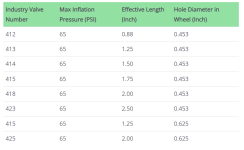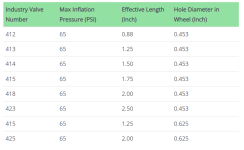Tyler, I admire your passion to jump into a new business while maintaining your day job until the side business replaces the day job. It’s so cool and the American Dream.
I have a co2 tank that’s been going on for 3 years now without issue. I still can’t say I am the biggest fan of the co2 setup. The biggest downfall is the refill. With that said, it is fast. How does a co2 tank surpass the 2cfm limit of a valve stem or does it not? I’m not sure you have the answer since you do compressors but I was curious. Since it’s a liquid that turns to gas maybe there is some voodoo magic going on there?
Anyways, I have started considering a “backup” system, one of these days this idiot (me) will forget to fill the tank when it’s low, go wheeling, and have ZERO source to air up and since I don’t trailer it all the time there may be a day I’m SOL.
I had the twin Diablo years ago and it was meh. It did constantly over heat but I had zero care to the duty cycle. When it turned off. I knew I reached the duty cycle.
So for air setups what do you recommend for 43in ballon tires? I noticed a huge difference in air up time going from 40x13.5 to 43x15 Baja pro xs (claim it’s 15 wide but really like 17 wide)
Is it dual compressors with a 5 gallon tank to a morrflate 4 tire inflation setup? Or is it just diminishing returns? Just accept it’s gonna be a while to fill up big tires?
Lastly, I saw all the comments on Nate’s mods. I am a tinkerer but there is nothing I want to do less then tearing apart a compressor, modifying it, and messing with it. There’s 10,000 other things I’d rather spend my time on in the garage.
If Tyler asks $100 more and has modifications and improvements to these compressors I’ll pay the extra $100. It’s worth it to not have to mess with it, that’s just me.
I am still contemplating my alternative air source (my co2 tank is almost empty, again!) but when I do it will probably be a morrflate.
Oh man, some good questions here. Nerdy science and math incoming!! (you are gonna be sorry you got me started haha)
Co2 surpassing 2cfm... it's because those things are pressurized. There are two main qualities of fluid dynamics... flow and pressure. And flow can change its values through an orifice depending on the pressure differential from one side of the orifice to the other side. If you are using a 2cfm compressor, then the psi on the compressor side of the Schrader valve is usually fairly close to the psi in the tires. So your flow values will typically be pretty close to the compressor ratings. When you have a 10cfm compressor Pushing air through a Schrader valve, you end up getting a psi differential between the compressor side and the tire side of the Schrader valve (which is why in line gauges will read high while airing up and you have to shut off the compressor to get accurate ratings of what's in the tire). So that higher pressure differential actually helps to "push" air (increase flow) from the compressor side to the tire side of the Schrader. But it also pushes back on the cylinders of the compressor, which gets into my earlier post. Even with a 10cfm compressor, that differential never really gets more than ~30psi. However, with a pressurized tank like a co2 tank, those are typically regulated around 250-300 psi (and backed from there by 1500-3000psi depending on your tank). By creating a pressure differential of 200psi, that creates a huge opportunity for air to flow rapidly through any orifice and expand on the other side to fill the space. So, in short, pressure differential between side a and side b of an orifice is what makes co2 tanks work so well.
Now for tires... I hear ya... once you get into bigger tires, continuously filling co2 tanks is painful on the wallet and time budget. As you increase tire size, volume gets a little out of control (exponential). Volume of a cylinder is (pi * radius ^2) * width. Now, with tires, we have a wheel in the center of them. So you gotta find the volume of the wheel and subtract that from the volume of the overall cylinder. So, to give you an idea of how the numbers work, we will do it on 17" wheels with a 35x12.50x17 tire, 40x12.50x17 tire, and 43x15x17 tire.
DISCLAIMER (because bepop is now on this thread and he wins the award for always finding the inconsequential things to argue about)... these numbers are not completely accurate for an actual tire and are for perfect cylinders, they are meant to give you relevant numbers and idea of how volume is impacted as you increase a circumference and width)*
A 17" wheel (if it were a cylinder) would take up the volume of (pi * 8.5 ^2) * width (we will get width as we plug in the tires). So wheel volume is 226.98 sqin * width. So for a 12.50 width, that is 2837.25 cuin. For a 15 width it is 3404.7 cuin. Now... if we want to convert that to cubic feet so that we talk about everything in terms of compressor outputs... that is 236.43 cuft and 283.72 cuft for our wheel volumes.
A 35x12.50 tire will have a volume of ((pi * 17.5 ^2) * 12.5) - 236.43 cuft... which is 765.77 cuft.
A 40x12.50 tire will have a volume of ((pi * 20 ^2) * 12.5) - 236.43 cuft... which is 1,072.57 cuft.
A 43x15 tire will have a volume of ((pi * 21.5 ^2) * 15) - 283.72 cuft... which is 1,531.53 cuft.
(again, those numbers are bloated for an actual tire as tires are not perfect cylinders... it just gives you an idea of how the numbers increase as you change variables)
So, as you can see... it is an exponential increase in volume of space that you have to fill when filing up bigger tires. If it takes 5 minutes to do 35s, it might take 7-8 minutes to do 40s, and then 12-13 min to do 43s. Which also means that the bigger tires you have, the quicker you will also go through co2 tanks and need refills. on 40" tires, I get about 2.5-3 trips out of a 10lb powertank before needing refilled. Which, as much as I love powertanks and the company and the guys there, was too expensive for my blood. They make some bitchin stuff, but I just can't afford to refill that much.
Honestly, the best thing I have found is to run a high output compressor, with as big of an air tank as you can fit, and a 4 tire hose system. So you are on the right path with your thinking. Just keep in mind that with 43s, 5 gallons doesnt go very far. 5 Gallons pressurized to 120psi might get you 2-4 psi in all 4 tires. Once the tank is depleted, then it is just whatever flow your air source can put out.
 ). That said, it runs hot AF and I personally know some farmers that burned them up in less than a year. So, stock Maxi is the 4.3L on n2o
). That said, it runs hot AF and I personally know some farmers that burned them up in less than a year. So, stock Maxi is the 4.3L on n2o
 Not troll-y, personally I'm interested in your thoughts as you've spent more time thinking about compressors than the rest of us.
Not troll-y, personally I'm interested in your thoughts as you've spent more time thinking about compressors than the rest of us. Mebbe a few snail squad? (I'm not one obviously, it may be a reason to sign up
Mebbe a few snail squad? (I'm not one obviously, it may be a reason to sign up

 . I like my Maxi, and considering they aren't available this deal go the price point down to where my cheap ass couldn't pass it up.
. I like my Maxi, and considering they aren't available this deal go the price point down to where my cheap ass couldn't pass it up. Naw, we'll still find reasons to argue, it's IBB. Just thought it would be fun as my purchasing sensibilities run more 486 and assideways, but I have access to some equipment that may be able to test the flow empirically, so I may be able to quantify the value of these options.
Naw, we'll still find reasons to argue, it's IBB. Just thought it would be fun as my purchasing sensibilities run more 486 and assideways, but I have access to some equipment that may be able to test the flow empirically, so I may be able to quantify the value of these options.